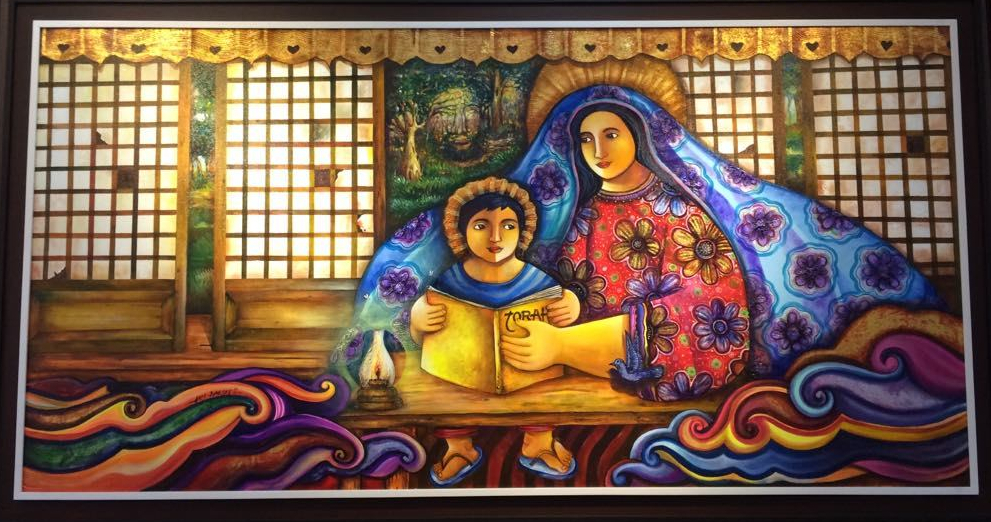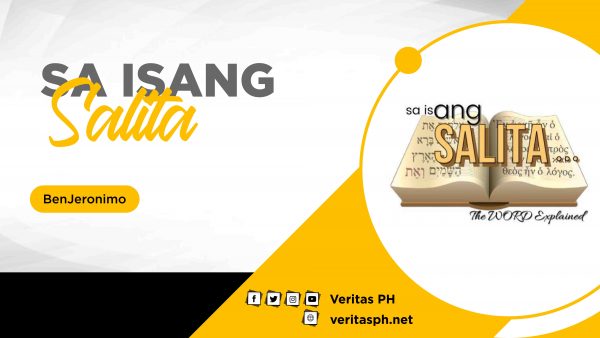185 total views
Surely today after our Simbang Gabi, all attention would be on the Miss Universe Beauty Pageant with everybody rooting for our bet, memorizing the names and answers of almost every candidate from all over the world. I have never seen any episode of Miss Universe or any beauty pageant in my entire life but from what I have read and heard, our intense interests with beauty contests is our way of coping with the harsh realities in our nation of crooks and corrupt officials that we try to identify with the beautiful and glamorous. As you examine every candidate later on TV, try remembering our reflection on this second Simbang Gabi which is also about names and origins and mission.
Today we begin the second phase of Advent when our liturgy shifts its focus to the first coming of Jesus more than 2000 years ago in Bethlehem. The Church’s official countdown for Christmas Day actually starts today December 17 until the 24th when all our readings look back to the events leading to Christ’s birth. Every year on this date we hear the beginning of the gospel of Matthew about the genealogy of Jesus Christ where we are presented with names of our Lord’s ancestors that mostly sound funny and even weird. Yesterday we have reflected that the joy of Advent and Christmas is the Person of Jesus Christ found among every person. Today, we deepen this reflection on the Person of Jesus Christ through His genealogy that reveals to us His origin and mission which we also share with Him.
It is interesting to recall that when Jesus faced Pilate during His trial, the Roman governor asked Him “Where are you from?” (cf. Jn.18:38). It was also the same question that all four evangelists tried to answer later in writing their respective gospel account of the Christ. For Matthew and John, it is the most essential question needed to be answered right away that they both opened their gospel accounts by presenting the origins of Jesus Christ. We shall reflect on John’s version about the origins of Jesus on Christmas; today we focus on Matthew’s genealogy which is very Jewish in flavor and context considering his own background and audience made up largely of Jewish converts to Christianity. Right away, Matthew traced the genealogy of Jesus to the two prominent figures of Israel by solemnly declaring at the beginning of his gospel, “The book of the genealogy of Jesus Christ, the son of David, the son of Abraham” (Mt.1:1).
For Matthew, the story of the promise of God begins with Abraham who was called to journey from his homeland to the Promised Land. More than a journey into another land, it was also a journey into the future by Abraham when all nations who would come from him shall come together to be blessed by the Lord. Every Jew is aware of this promise by God to Abraham and Matthew is now reminding them how everything was fulfilled in the birth of Jesus as the Christ. Pope Emeritus Benedict XVI explains in “Jesus of Nazareth, the Infancy Narratives”that “From the beginning of the genealogy, then, the focus is already on the end of the Gospel, when the risen Lord says to his disciples: ‘Make disciples of all nations’ (Mt.28:19). In the particular history revealed by the genealogy, this movement toward the whole is present from the beginning; the universality of Jesus’ mission is already contained within his origin” (page 5).
Next to Abraham, Matthew structured much of the history of his genealogy around the figure of David, the greatest king of Israel to whom the promise of eternal kingdom had been given by God. Fully aware of the significance of symbolisms in number among his people, Matthew structured the genealogy of Jesus into three sets of fourteen generations considering that the Hebrew letters of the name David add up to fourteen also: “Thus the total number of generations from Abraham to David is fourteen generations; from David to the Babylonian exile, fourteen generations; from the Babylonian exile to the Christ, fourteen generations” (Mt.1:17). Again, we listen to Pope Emeritus Benedict XVI,“this threefold division by Matthew shows that the genealogy of Jesus is in fact the Gospel of Christ the King wherein we can find the whole history looking onto Him whose throne is to endure forever (ibid., page 6).” Here we find anew the fulfillment in Jesus of God’s promise to Abraham and to David.
The third and surprising element in Matthew’s genealogy of Jesus is the inclusion of five women that is very novel at that time considering it was a male dominated world. See that Matthew traced more of the male line of the Lord’s genealogy; he must be up to something in mentioning the five women as roots also of Jesus: Tamar, Rahab, Ruth, Bathsheeba the wife of Uriah, and then Mary His mother. The first four women were considered sinners and right away we can see how Matthew had indicated in the genealogy the mission of Jesus as Savior of the world when He took upon Himself the sins of the four women including those of the world. It was not chauvinism on the part of Matthew but simply employing a technique prevalent at that time; but, here he also presents to us another reality of aside from being sinners, all four women before Mary were also foreigners or gentiles who were looked down upon by the Jews at that time. Through them, Christ’s mission to the Gentiles is also made manifest in His genealogy, proof that indeed the genealogy of Jesus is the whole Gospel in itself!
But the biggest surprise of Matthew after putting four sinful, gentile women in the genealogy of Jesus is his manner of ending it with another woman though this time a Jewish one, Mary. Note like in a song all throughout the genealogy, we find the pattern of father and son like in “Abraham was the father of Jacob” to indicate human paternity among the ancestors of Jesus. Note how Matthew would devise a twist near the end by telling us “Jacob (was) the father of Joseph, the husband of Mary. Of her was born Jesus who is called the Christ” (Mt.1:16). The evangelist is very clear here with the Divine origin of Jesus Christ who did not come from Joseph or any human father. Right after the genealogy, Matthew would narrate the circumstances surrounding the birth of Jesus Christ, stressing the fact that He was conceived in the womb of Mary by the Holy Spirit. Very clear Matthew has no plans of minimizing the role of Joseph in Christ’s birth; on the contrary, the evangelist extolled Joseph’s role at the genealogy and following story of the Nativity that as the legal father of Jesus, Joseph makes Jesus legally from the Davidic line of succession as fulfillment of the promise to David by God. Such is the mystery of the person of Jesus Christ that although His origins can be traced to humans, beginning with Abraham and David, He also came from above with God truly His Father which we profess in faith that He is true God and true Man. In Jesus Christ through Mary, “human existence starts afresh so that we can now claim that our true genealogy is in our faith in Jesus who gives us our origin and mission from God (ibid.).”
One of my spiritual fathers who has a tremendous impact in my life was the late American Jesuit Fr. Arthur Shea. He was my spiritual director during our Ignatian 30-day retreat in Cebu more than 20 years ago. His favorite expression was “man is a mystery.” Indeed, every person is a mystery for we never know exactly everything about him or her, someone we must always respect because no matter what, he or she is a child of God above us. The genealogy of Jesus Christ challenges us today to rise and hold on to that honor of being a beloved child of God that despite our sinful past, many weaknesses and failures, we can always start afresh like Mary putting an end to the cycle of sins and evil. The genealogy of Jesus Christ reminds us that life is more about direction than destination. Like Abraham, we are all wayfarers treading the path of Jesus who is the way, the truth and life with no clear indications of places to go except of directions to the future to be like Him. Like David, God would always find a way to change our courses in life so we can follow His direction despite our grave sins. Let us pray with Mary that we may let God set the direction of our lives so that we may bring Christ back into this world that has veered away from Him.AMEN.Fr.NicanorF.LalogII,Parokya ng San Juan Apostol at Ebanghelista, .Gov. F. Halili Ave., Bagbaguin, Sta. Maria, Bulacan.
*Photo is another painting on acrylic (48×96) by Bulakenyo artist Aris Bagtas called “Luklukan ng Karunungan” (Seat of Wisdom) displayed at the second floor of the Library of the Immaculate Conception Major Seminary at Guiguinto, Bulacan. A lively and beautiful rendition by Aris of Mary teaching her Son Jesus Christ while at the background is Joseph looking at them. Used with permission.












